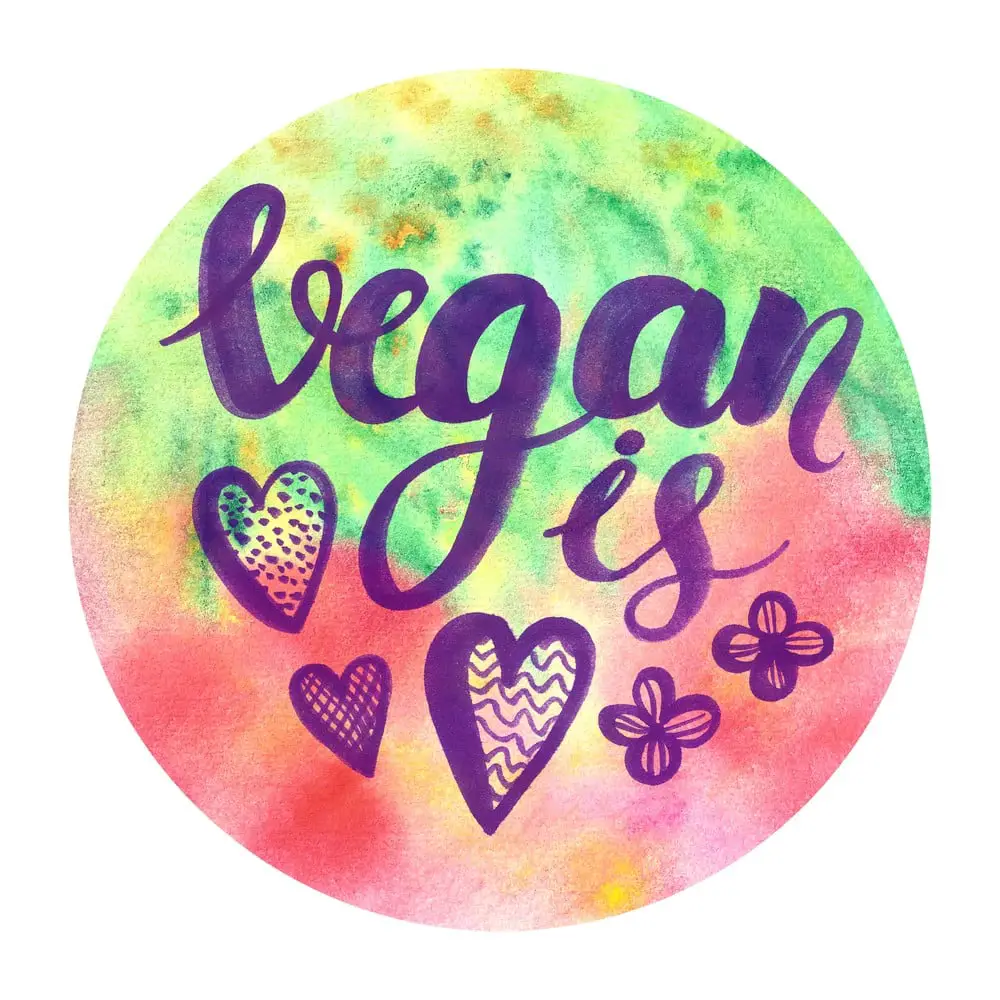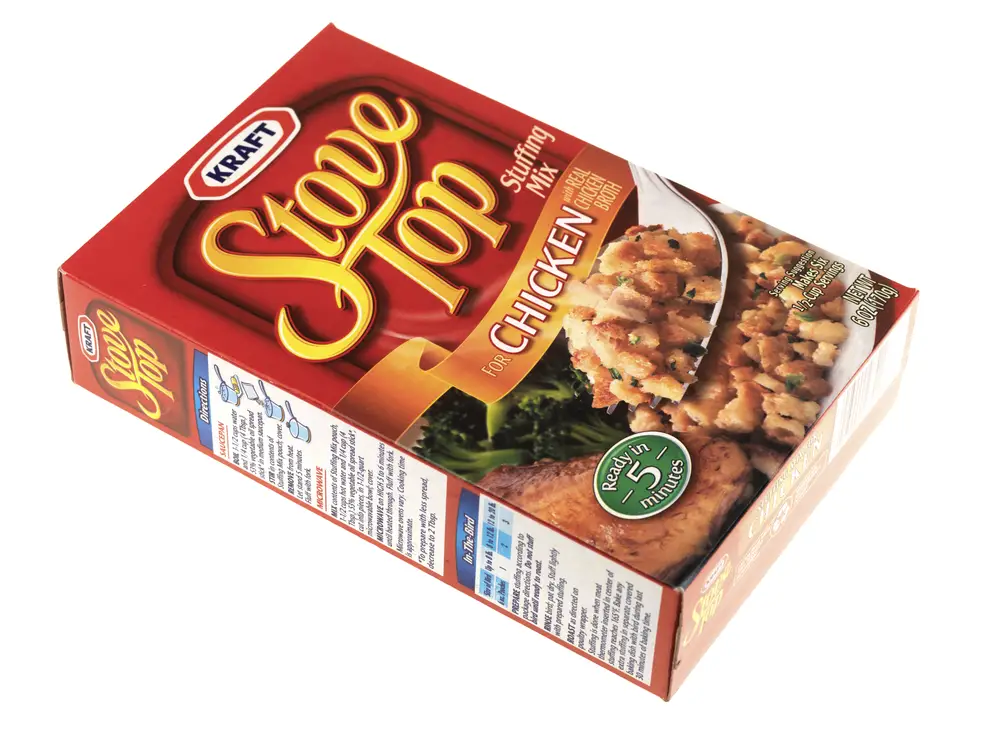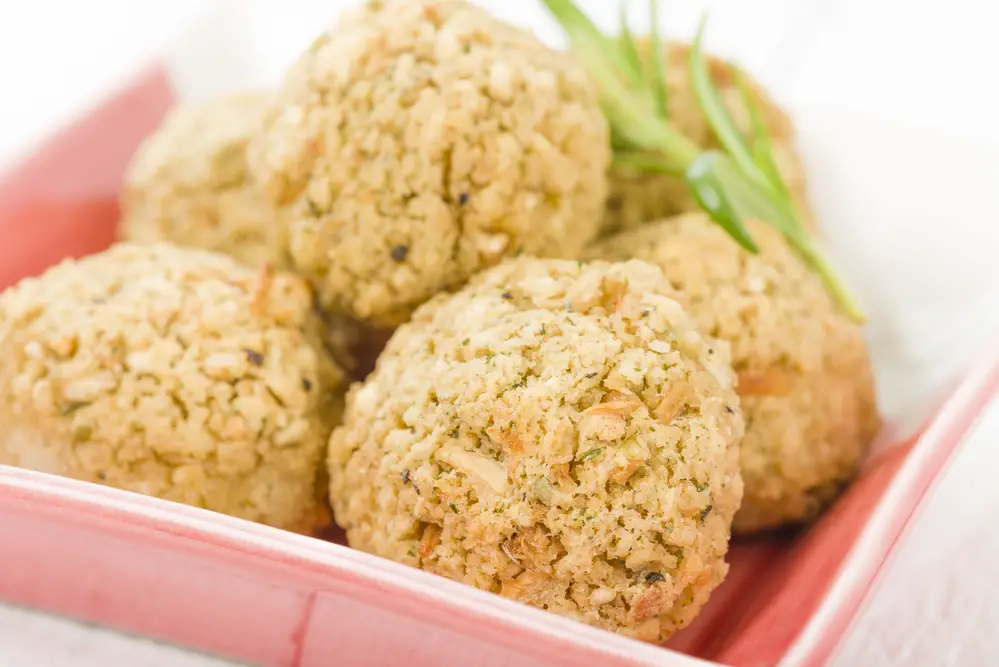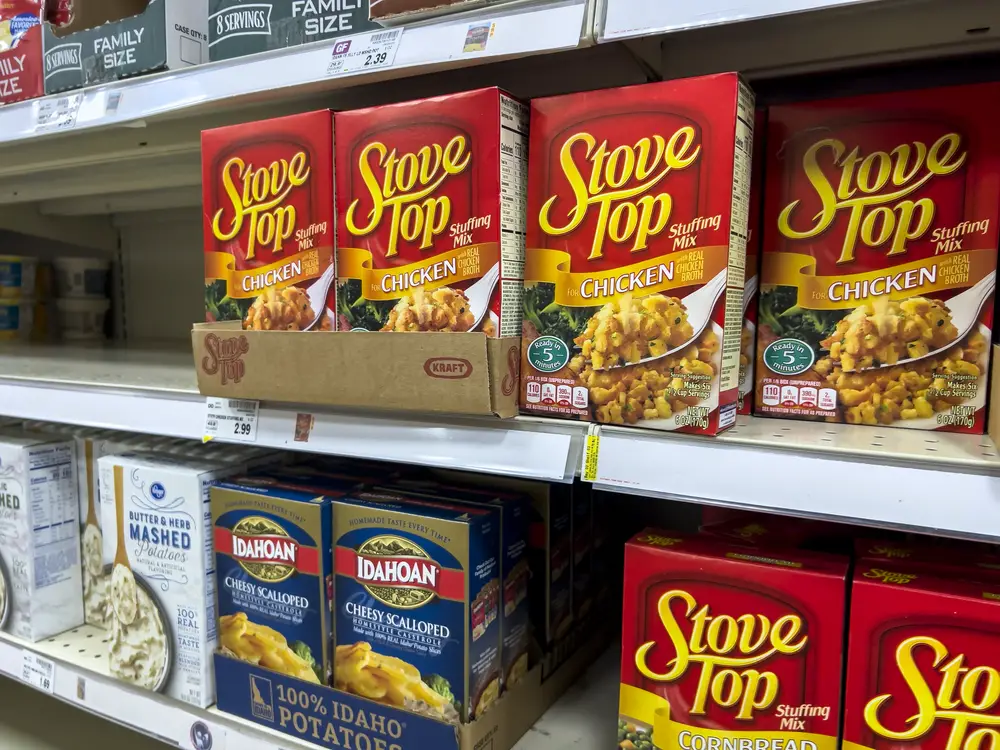When it comes to planning a meal and committing to a vegan lifestyle, it’s important to pay attention to every component of your plate. Stove-top stuffing is a popular side dish that is often served at festive meals and family gatherings. However, if you’re a vegan, you need to be aware of whether or not this dish is aligned with your dietary choices. The answer to whether or not stovetop stuffing is vegan is not straightforward. It depends on the specific variety and the definition of veganism that you follow.
Veganism involves abstaining from all animal products and byproducts, which means that any food containing meat, dairy, or other animal-derived ingredients is not considered vegan. Checking labels and ingredient lists becomes a staple for those following a vegan diet. Stove Top stuffing traditionally contains ingredients like chicken broth or butter, which are not vegan. However, there might be variations of stuffing that avoid animal-based ingredients, making it suitable for a vegan diet.
Choosing or preparing vegan stuffing can be simplified with knowledge of suitable substitutes and preparation methods. There are plant-based alternatives for nearly every non-vegan ingredient, and with the right recipe, you can even make delicious vegan stuffing from scratch. Whether you’re looking for a pre-made solution or ready to cook up a storm, understanding your options can make your festive meals both vegan-friendly and appetizing.
Key Takeaways
- Stove Top stuffing may not be vegan due to ingredients like chicken broth or butter.
- Vegans need to inspect ingredient lists or seek specific vegan-friendly stuffing varieties.
- Creating a delectable vegan stuffing at home is achievable with proper substitutes and recipes.
 Understanding Veganism
Understanding Veganism
When considering if stove top stuffing is vegan, it’s vital to understand what veganism entails and why the ingredients matter significantly to those following this lifestyle.
Defining a Vegan Diet
A vegan diet includes foods made without animal products. This means no meat, dairy, eggs, or honey—essentially, nothing that involves animal exploitation or harm. Here are the basics:
- Exclude: Animal-derived products
- Include: Fruits, vegetables, legumes, nuts, seeds, and grains
For someone following a vegan diet, reading labels becomes second nature to identify non-vegan additives that could be hiding in seemingly plant-based products.
Key Takeaway: Your diet is vegan if it consists solely of plant-based foods and excludes all animal products.
The Importance of Plant-Based Ingredients
Plant-based ingredients are the cornerstone of vegan cuisine, not just for ethical reasons but often for health considerations, too. Here’s why they’re crucial:
- Health: Many people choose plant-based ingredients for their potential health benefits, including a lower risk of heart disease, diabetes, and certain cancers.
- Ethics: Using plant-based ingredients supports a more ethical and sustainable food system by reducing dependence on animal farming.
Checking ingredients ensures the product aligns with a vegan lifestyle and can support your health and ethical beliefs.
Key Takeaway: Plant-based ingredients are essential in a vegan diet, promoting health and ethical eating habits.

Components of Stove Top Stuffing
When considering whether Stove Top stuffing is vegan, it’s essential to scrutinize the ingredients. In this section, we’ll peek behind the packaging to reveal what goes into this classic side dish and highlight what could be potential red flags for vegans.
Typical Ingredients in Store-Bought Stuffing
- Bread Crumbs: The foundation of any stuffing, bread crumbs in Stove Top stuffing usually include wheat flour, niacin, ferrous sulfate, thiamin mononitrate, riboflavin, and folic acid.
- Seasonings: A blend of herbs and spices like sage, thyme, and marjoram adds a distinctive stuffing flavor.
- Vegetables: Dehydrated vegetables, including onions, celery, and parsley, are often a component.
- Oils and Fats: Canola or palm oil may be used for richness.
Non-Vegan Ingredients to Watch Out For
- Chicken Broth: Often used for its savory taste, it is a clear, non-vegan component.
- Chicken Fat: Another common non-vegan ingredient, it’s added for flavor.
Key Takeaway: While basic ingredients like bread crumbs and seasonings might seem vegan, the chicken broth and chicken fat in Stove Top stuffing are clear indicators it’s not suitable for vegans.
 Vegan Substitutes for Stuffing
Vegan Substitutes for Stuffing
When adapting stuffing recipes to fit a vegan diet, you’ll want to focus on two main components: the liquids and fats used for moisture and flavor and the base ingredients like bread and herbs that form the stuffing. Explore the best vegan alternatives to keep your stuffing delicious and cruelty-free.
Plant-Based Broths and Butters
Vegetable Broth:
- Ensure moisture by using vegetable broth instead of traditional chicken or beef broth.
- Choose a rich, flavorful vegetable broth or make your own for the base of your stuffing.
- For that buttery richness, opt for vegan butter, which is dairy-free.
- Vegan butter can be used like dairy butter, measured equally in stuffing recipes.
Key Takeaway: Replace animal-based liquids and fats with vegetable broth and vegan butter to maintain moisture and flavor in your stuffing without any animal products.
Vegan Bread and Herbs
Bread Choices:
- Sourdough: A robust choice that adds a tangy flavor.
- Multigrain: Offers a hearty texture and is often richer in nutrients.
- Gluten-Free Bread: An excellent option for those avoiding gluten while still enjoying stuffing.
Herbs:
- Fresh or dried herbs such as sage, rosemary, and thyme give your vegan stuffing an aromatic lift.
- Be generous with herbs to mimic the traditional flavors you love.
Key Takeaway: Select vegan-friendly breads like sourdough or multigrain, and don’t skimp on the herbs to create a stuffing that’s both tasty and aligned with your dietary choices.
Preparing Vegan Stuffing
When creating vegan stuffing, you will focus on plant-based ingredients and ensure rich flavors through herbs and seasonings.
Sourcing Vegan-Friendly Ingredients
To begin, gather your base ingredients:
- Veggies: Choose fresh produce like celery, onion, and carrots.
- Bread: Opt for a vegan variety without dairy or eggs.
Check labels diligently for non-vegan additives. Your key ingredients should be:
- Herbs: sage, thyme, and rosemary
- Spices: garlic (fresh or powdered), salt, and pepper
- Oil: Olive oil is ideal for sautéing and adding richness.
Key Takeaway: Always verify ingredient labels to guarantee they’re vegan.
The Art of Seasoning
Seasoning is where you infuse personality into your stuffing:
- Herbs: Fresh is best, but dried will work. Use sage, thyme, and rosemary.
- Garlic: Nothing beats freshly minced garlic for depth, but garlic powder is a fine substitute.
- Salt and Pepper: Adjust to your taste, remembering it’s easier to add more than to remove.
Combine your herbs and spices before adding them to the mixture to ensure even distribution.
Key Takeaway: Fresh herbs and proper seasoning are crucial for a flavorful stuffing.
Cooking Techniques for the Perfect Texture
Achieving the perfect texture is a balance between moist and crisp:
- Sauté veggies in olive oil until they’re just softened.
- When mixing with bread, evenly coat to avoid sogginess.
- Baking is the final and essential step — aim for a golden-brown crust.
Key Takeaway: A combination of sautéing and baking achieves the best texture.
Holiday Vegan Stuffing Variations
When planning your festive menu, vegan stuffing, infused with classic tastes and delightful twists that adhere to vegan standards, can still be the centerpiece of holiday meals.
Traditional Thanksgiving Flavors
Your traditional Thanksgiving stuffing can be transformed into a vegan delight. Start with a base of stale bread cubes or even vegan cornbread. Stir in sautéed onions and celery, then liberally season with traditional sage, thyme, and black pepper. For moisture and added flavor, vegetable broth is your go-to choice.
- Key Takeaway: Substitute animal-based ingredients with vegetable broth and vegan bread, and you’ll still capture the essence of Thanksgiving in every bite.
Christmas-Inspired Stuffing Ideas
Christmas stuffing can be bold yet plant-based. Think outside the box with a merry blend of dried cranberries and cubed apples for a sweet contrast. Add chopped vegan sausage for heartiness and an extra layer of flavor. Tie it all with rosemary and a hint of nutmeg to bring out a distinctive Christmas aroma.
- Key Takeaway: By incorporating fruits and vegan sausage, you create a festive dish that’s both satisfying and bright with Christmas cheer.
Festive Vegan Add-Ins
To elevate your stuffing, introduce a variety of festive vegan add-ins. Here’s a quick list of ideas:
- Sliced almonds or pecans for crunch
- Cranberries or pomegranate seeds for a burst of tartness
- Finely diced butternut squash for a touch of sweetness and color
- A handful of fresh parsley for a fresh, herby finish
Sprinkle these add-ins according to your taste preferences and enjoy the extra texture and vibrant flavors.
- Key Takeaway: Mix and match these add-ins to personalize your stuffing and impress your guests with a unique twist on the classic holiday side dish.
Stuffing Preparation Tips
When you’re gearing up to make stuffing, the balance of moisture and crispness is essential. Here’s how you can nail it every time, whether you choose to go with the stovetop or the oven.
Stovetop Versus Oven Methods
Using your stovetop is a real-time-saver and allows for more control over the cooking process. You can observe and adjust the moisture level, ensuring the stuffing doesn’t get too soggy or dry. Here’s what you need to keep in mind:
- Stovetop cooking is faster, typically taking about 5-10 minutes.
- Keep a close eye on the heat to prevent burning.
For the oven method, expect a bit more of a time commitment. The benefit here is achieving an even, golden crust on top of your stuffing, which many find irresistibly delicious:
- Preheat your oven to 350°F (175°C), and bake your stuffing for 25-30 minutes.
- Cover with foil for the first half, then remove for a crispy top layer.
Getting the Right Moisture and Crispness
Moisture is critical to good stuffing, but too much can turn it into a soggy mess. On the flip side, a lack of moisture can lead to dry, crumbly stuffing no one’s excited about—here’s how to find that happy medium:
- Start with slightly dry bread; it absorbs the flavors better without becoming mushy.
- Gradually add your broth, checking consistently until you reach the desired moisture.
For that perfect crisp:
- In the oven, remove the covering in the last 10-15 minutes of baking.
- Turn up the heat on the stovetop in the final minutes, but watch it closely to prevent burning.
And remember: whether you opt for stovetop or oven baking, your efforts will produce delicious results with the right care and attention.
Healthy and Allergy-Conscious Adaptations
When adapting stuffing to suit vegan diets, considering health and allergies can make it inclusive for everyone at the table. These adaptations not only ensure deliciousness but also cater to different dietary needs, enhancing the wellness factor of the traditional dish.
Gluten-Free Vegan Stuffing
For a gluten-free version, bread is the main ingredient that needs substitution. You could opt for:
- Certified gluten-free bread: Stores offer a variety of gluten-free breads perfect for stuffing.
- Cornbread: This naturally gluten-free option adds a unique flavor.
- Wild rice or quinoa: For a non-bread alternative, these grains provide a hearty substance.
Remember to check the labels on any added broths or seasonings to ensure they don’t contain hidden gluten.
Key takeaway: Select a gluten-free base and check all ingredients to ensure compliance.
Nut-Free and Oil-Free Options
Navigating nut allergies or reducing oil can be pretty simple with these hacks:
- Seeds as a nut alternative: Sunflower or pumpkin seeds can give that nutty crunch.
- Vegetable broth instead of oil: For sautéing, a splash of broth can effectively replace oil to keep things moist.
Experiment with herbs and spices to enhance flavor without relying on nuts or oil.
Key takeaway: Utilizing seeds and broth can help replicate traditional textures and flavors while accommodating dietary restrictions.
Serving and Storage
When it comes to enjoying stove-top stuffing, knowing how to serve and store it ensures your meal remains delicious and safe.
Complementary Dishes
- Gravy: Drizzle on top to add moisture and flavor.
- Mashed Potatoes: Serve on the side for a classic pairing.
- Vegan-Friendly Options: Accompany with roasted vegetables or a lentil loaf to keep the meal plant-based.
Key Takeaway: Pair your stuffing with gravy and mashed potatoes, or keep it all vegan with plant-based sides.
Storing and Reheating Leftovers
- Refrigerate within two hours of cooking to maintain safety.
- Store in airtight containers, lasting 3-4 days.
- Reheating: Warm in a preheated oven (350°F) until hot, or microwave for convenience.
Tip: For the best taste, cover while reheating to retain moisture.
Key Takeaway: Store leftovers properly and carefully reheat to enjoy your holiday recipe beyond the first serving.
Making Vegan Stove Top Stuffing from Scratch
Creating a delicious vegan stovetop stuffing from scratch is straightforward. You’ll be amazed by how simple the process is and how it results in a flavorful dish.
Ingredients
- 1 loaf of stale bread (about 10 cups when cubed)
- 2 tablespoons of olive oil
- 1 large onion, finely chopped
- 3 stalks of celery, chopped
- 2 cloves of garlic, minced
- 2 teaspoons of poultry seasoning
- ½ teaspoon of salt
- ½ teaspoon of black pepper
- 2 cups of vegetable broth
- 1/4 cup of fresh parsley, chopped
Prep and Cook Time
- Prep Time: 15 minutes
- Cook Time: 30 minutes
- Total Time: 45 minutes
Yield
- This recipe serves about 6-8 people as a side dish.
Directions
- Begin by preheating your oven to 300°F (150°C). Spread the bread cubes on a baking sheet in a single layer and bake for about 10 minutes or until dry.
- In a large skillet, heat the olive oil over medium heat. Add onions and celery, cooking until soft and aromatic, typically around 5 minutes. Stir in the garlic, poultry seasoning, salt, and pepper, and cook for another minute.
- Add the dry bread cubes to your skillet and toss them to coat with the veggie mixture.
- Gradually pour the veggie broth over the bread, stirring gently. You want the bread to be moist but not soggy. Add in the chopped parsley, giving it a final mix.
- Transfer everything to a pot and cover. Cook on a medium-low heat for about 20 minutes.
Remember: It’s key to keep an eye on the consistency. If it looks too dry, don’t hesitate to add a little more broth. You’re looking for a stuffing that’s moist and holds together, not swimming in liquid.
By following these steps, you’ll have a tasty, homemade vegan stovetop stuffing that’s sure to impress.
Frequently Asked Questions
When diving into the specifics of vegan stuffing, it’s crucial to know the ingredients and alternatives that align with vegan dietary choices.
What ingredients in stuffing mixes are not vegan-friendly?
Typically, non-vegan ingredients in stuffing may include chicken broth, butter, or eggs. These are often used for flavoring and binding, but they’re derived from animals, which doesn’t suit a vegan diet.
Key takeaway: Check for animal-derived ingredients like chicken broth, butter, and eggs.
Can you recommend a vegan alternative to traditional stove top stuffing?
Sure, there are vegan stuffing mixes available in stores, or you could opt for homemade recipes using vegetable broth, vegan butter, and skipping eggs—brands like Mrs. Cubbison’s offer vegan stuffing that’s readily available.
Key takeaway: Look for store-bought vegan stuffing or use vegan ingredients in homemade recipes.
Are there any dairy ingredients in typical boxed stuffing products?
Yes, many boxed stuffing products include dairy items such as milk proteins or butter. Always read the label to confirm if the product is dairy-free.
Key takeaway: Inspect labels for dairy ingredients in boxed stuffing mixes.
What are some vegan options for Thanksgiving stuffing?
For a festive feast, you could go for stuffing made with ingredients like wild rice, cranberries, nuts, whole grain bread, and rich spices—all vegan-friendly. There are also vegan cornbread stuffings that add a unique twist.
Key takeaway: Experiment with wild rice, cranberries, nuts, and vegan cornbread for festive stuffing options.
How can I modify a traditional stuffing recipe to be vegan?
You can modify a traditional recipe by substituting chicken broth with vegetable broth, butter with vegan butter or olive oil, and skipping eggs or using a flaxseed mixture as a binder.
Key takeaway: Substitute non-vegan ingredients with plant-based alternatives to veganize your stuffing.
Does Pepperidge Farm make a vegan stuffing mix?
At the time of writing, Pepperidge Farm doesn’t offer a specific vegan stuffing mix. It’s best to review the ingredients of their products or reach out to their customer service for the most current information.
Key takeaway: Contact Pepperidge Farm or examine their products’ ingredients for vegan options.

